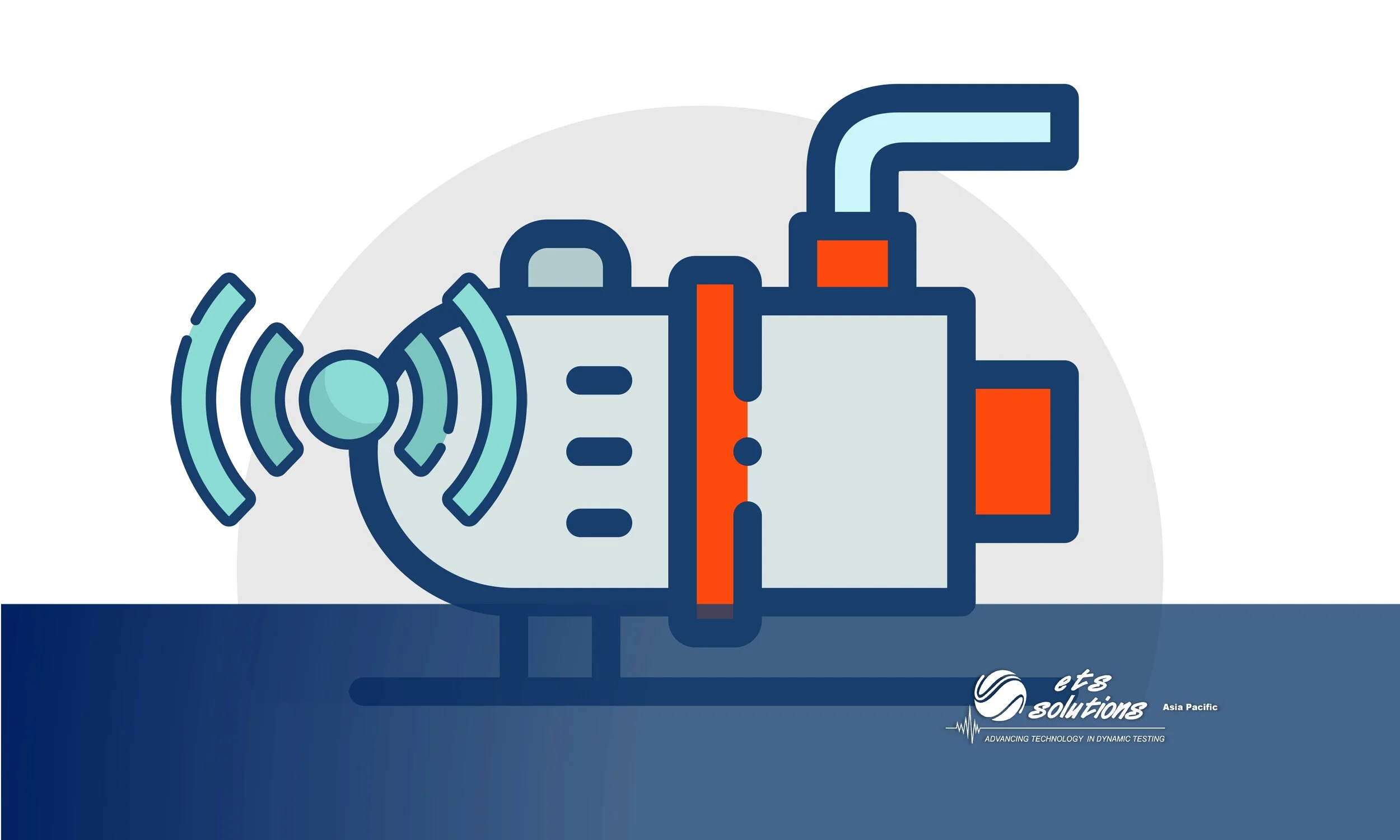A vibration sensor is a device that measures the amount and frequency of vibration in a given system, machine, or piece of equipment. Vibration sensors can be used to give maintenance teams insight into conditions within key assets that might lead to equipment failure, allowing them to predict the maintenance of the machinery, to reduce overall costs and increase the performance of the machinery.
Multi Axis Vibration
Multi axis vibration testing is a complex testing method whereby a sample is shaken or excited along more than one axis. Multi axis vibration testing is performed by applying a single-axis vibration to a sample along the X, Y and Z axes of the product. These tests are usually performed using a linear shaker and rotating the sample onto the following axis after each round. Although the single axis shaker is still widely used for vibration testing, latest research has shown that there are some conditions which are not appropriate to be simulated by this equipment.
Jig or Fixture Design Problems and Solutions
Test fixture resonance. Prior to test, a test fixture survey should be conducted to ensure that the structural characteristics of the test fixture do not introduce uncontrollable resonances into the test setup. The survey may be experimental or analytical. If problematic resonances are identified, modifications should be made to the test fixture to shift the resonance beyond the frequency range of the test or to dampen the resonance in order to minimize the effect on the test.
Vibration Measurement Techniques in Power Plant
Vibration measurement is complex because of its many components: displacement, velocity, acceleration, and frequencies. Vibration measurement is an effective, non-intrusive method to monitor machine condition during start-ups, shutdowns and normal operation. Regular vibration monitoring can detect in a power plant shaft lines, deteriorations and defects of a number of various structural mechanical conditions, for example cracks, bearing faults, coupling damage, imbalance as well as interruptions in the electric grid.
Gas Turbine Vibration Monitoring
Vibration measurements are commonly considered to be a sound indicator of a machine’s overall health state (global monitoring).The general principle behind using vibration data is that when faults start to develop, the system dynamics change, which results in different vibration patterns from those observed at the healthy state of the system monitored.
Vibration Analysis on a conveyor unit
Belt conveyors are an integrated transmission and carrying mechanism with length sometimes extending several thousand meters. In traditional design and analysis of belt conveyors, vibration and impact are usually ignored and only static design is considered. However, to ensure the safety of conveyor operation for this restricted analysis, designers must increase the safety factor, which increases production costs. Many research groups have conducted dynamic analysis of large belt conveyors to reduce production cost and optimize conveyor performance. The conveyor belt was first modeled as an elastic body and then a viscoelastic body to incorporate viscoelastic characteristics of belt cover layer.
Electronic Components Reliability Testing
If your company makes planes, trains, automobiles, medical devices, computers, and communication systems, or you are a large electronic device supplier, the reliability of your products in the field is crucial to your business success. The growing market for electric and hybrid vehicles is increasing the pressure on life-time performance of the devices that power them.
Torsional Vibration Analysis
Torsional vibration measurements allow engineers to better understand the dynamics of their rotating equipment, enabling them to troubleshoot and/or validate performance. With a better understanding of the reasons and methods to measure torsional vibration, the right instrumentation, and a helpful partner, you will become better positioned to make the decisions you need to decrease downtime and increase productivity.
Vibration Analysis
Vibration analysis is the most prevalent method used to monitor the levels and patterns of vibration signals within a component, machinery or structure, in order to detect abnormal vibration events and then using that information to analyse and evaluate the overall condition of the component, machinery or structure. In short, vibration analysis helps you monitor and detect issues using vibration data
Noise and Vibration Monitoring Guidelines
Noise and vibration are both dynamic processes and have a close physical relationship. Vibrating systems make noise, and noise makes structural systems vibrate. Both noise and vibration are adversely affecting people and if sufficiently intense, both noise and vibration can permanently hurt people. At the same time, also structural systems, if excited by excessive noise and vibration over sufficient periods of time, can fatigue and fail.
Practical Aspect on Fixture Design Calculation
Ideally, the vibration test fixture should be designed to be: first, as light as possible and second, as stiff as possible. But in the real vibration testing world, there are a lot of constraint that we need to consider and then we need to find and optimum point, that can balance all required aspects such as cost, timeline, etc.
Batteries in Electric Vehicles, How Long Do They Last?
While it is true that electric cars lose battery capacity over time. The continuing advances in technology in precise degradation are difficult to define as a whole. The main factor is all down to the owner and how they treat the battery. The way energy is added, the way it is removed. And how many charging cycles, the battery experiences look after your battery and your battery will look after you.
Vibration Resistance of Electrical Equipment
Shock and vibration resistance gives information concerning the robustness of the mechanical design of a device. The methods for evaluating the vibration resistance are defined in IEC 60068-2-6 and IEC 60068- 2-64. Electrical and electronic equipment are exposed to vibration in many applications and must withstand this without any degeneration, or even failure, in their function. Therefore, manufacturers of electrical and electronic devices put a great deal of effort into ensuring their instruments are prepared for such applications.
Random Vibration Testing
Different Types of Calibration
Measurement equipment calibration can be carried out on different types of instruments across different sectors. Electrical calibration refers to the process of verifying the performance of any instrument that measures or tests electrical parameters such as: voltage, current, resistance, inductance, capacitance, time and frequency. Mechanical instruments are subject to drift due to regular usage, mechanical shock and exposure to varying atmospheric conditions, as such mechanical calibration is needed.
The benefits of An Accredited Calibration Services Laboratory
The benefits of calibration include improving safety as well as saving money and increasing profitability by avoiding the costs of false acceptance and rejection of products, increasing production efficiency, and extending the life of the equipment. Since the standards of accredited calibration labs are set really high, you can be confident of the accuracy levels of the calibrations.
Sine Vibration Testing
Sine Vibration Testing may be considered as the most basic vibration testing method used. This type of vibration testing requires less complex parameters compare to other type of vibration testing. Knowing the nature of sinusoidal signal, makes this type of vibration testing easier to understand and to get familiar with. Though, easier to understand does not make it less important compare to other type of vibration testing. Sine vibration testing may still be at the top rank when we are thinking of dynamic characteristic measurement.
Factors That Affect The Accuracy of Measurements
Instrument calibration ensures that the instruments perform with high accuracy without compromising the final quality of the product. They perform best when they are calibrated following the manufacturers’ recommendations. Several factors may affect calibration, which will further affect the end quality, rendering the objective of calibration useless. Three of these factors are discussed in this article.





















